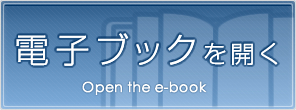For the Safety Navigation In Japanese Coastal Waters page 19/120
このページは For the Safety Navigation In Japanese Coastal Waters の電子ブックに掲載されている19ページの概要です。
秒後に電子ブックの対象ページへ移動します。
「電子ブックを開く」をクリックすると今すぐ対象ページへ移動します。
概要:
- 15 -once they grow up.(3) Waves Caused by Low Atmospheric PressuresAccording to weather observations at specific points in sea areas east of Honshu, lowatmospheric pressures which generate rough wav....
- 15 -once they grow up.(3) Waves Caused by Low Atmospheric PressuresAccording to weather observations at specific points in sea areas east of Honshu, lowatmospheric pressures which generate rough waves more than 5 metres high occur 17 timeson average during the winter months (December through February) or once every 5 days. Itis reported that the height of these waves reaches a maximum of 13 metres. At a specificpoint in the sea area south of Honshu, low atmospheric pressures equivalent in violence tothose mentioned above are observed about 4 times on average every year. The height of thewaves generated by these low atmospheric pressures reaches a maximum of 8 metres inMarch.(4) Waves Generated by TyphoonsWaves in the area of a typhoon are distributed with the highest intensity in the right-rearsection of the quadrant and the lowest intensity in the left fore section according to thedirection of the typhoon. This phenomenon can be interpreted by combining the followingconditions the wind velocity in the right semicircle (dangerous semicircle) is higher than that in theleft semicircle (navigable semicircle); in the right semicircle, the waves and the typhoon generally advance in the same direction,and both the time and distance in which the waves are exposed to the wind in the samedirection are longer than those measured in the left semicircle; and the waves in the rear semicircle and the rolling swell in the fore semicircle overlap in therear semicircle, so that they are intensified. The height and periodic distribution of thewaves in the area of a typhoon largely depend on the velocity of the typhoon. When thevelocity of the typhoon is high, the waves in the rear semicircle are much higher thanthose in the fore semicircle. When the velocity of the typhoon is nearly equal to that of thewaves, the waves gained in force, reaching the rear semicircle simultaneously with thetyphoon, so that the waves suddenly become higher, especially in the dangeroussemicircle. Special precaution should be taken for this.(5)Waves in the Japan Sea〔Wind and waves〕In the Japan Sea and along the northwest coast of Honshu, big waves rise frequently inwinter due to the effects of low atmospheric pressure and northwesterly seasonal wind. Thelow pressure velocity is 20 to 30 km/h, while the wind velocity is approximately 20 m/s andrarely exceeds 25 m/s. Wind and waves develop with a period of less than 12 seconds. Theheight of the waves is more than 8 metres; in extraordinary cases, it exceeds 10 metres. Onaverage, low atmospheric pressure passes through once a week. It may be said, therefore,that not a day passes without waves developing.In spring and autumn, the waves are comparatively low and surge for a short duration.Occasionally, high waves develop in the sea area along the coast due to localized winds.In summer, a long spell of fine weather is generally observed except when a typhoon ispassing.In the sea area along the coast of the Japan Sea, the mean wave height is 0.6 to 1 metreand the mean wave period is 7 seconds. Waves of more than 2 metres high continue to risefor 1.4 days at the time of a typhoon, and for 3 days at the time of low atmospheric pressure.

